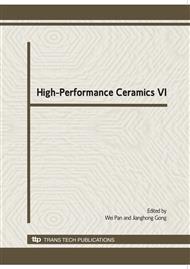p.496
p.499
p.502
p.506
p.510
p.514
p.518
p.522
p.526
Characteristic of Palladium Coated Tubular Alumina Composite Membrane for Hydrogen Separation
Abstract:
The palladium membrane has been developed for high temperature separation of hydrogen from other syngas molecules. In this study, tubular α-alumina substrate was used as a support for increase mechanical strength for thin palladium membrane. Prior depositing of palladium film, a dip-coating of palladium nuclei was performed to cover the substrate. Afterward, surface of activated support was modified with a thin intermediate layer for improving adhesion between support and Pd membrane. Electroless plating of dense palladium membrane was achieved from the plating bath containing EDTA stabilized palladium complex and hydrazine. The microstructural characteristics of palladium membranes were analyzed.
Info:
Periodical:
Pages:
510-513
Citation:
Online since:
March 2010
Authors:
Price:
Сopyright:
© 2010 Trans Tech Publications Ltd. All Rights Reserved
Share:
Citation:


